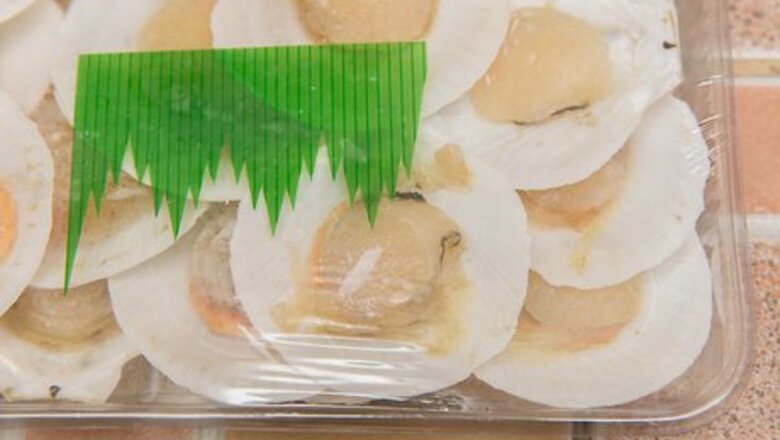
views
Opening the Scallop
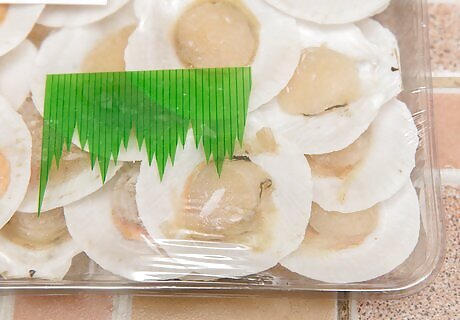
Store your scallops on ice. This will allow them to open with ease. Warmer scallops are very difficult to open. You could also store your scallops in the refrigerator.
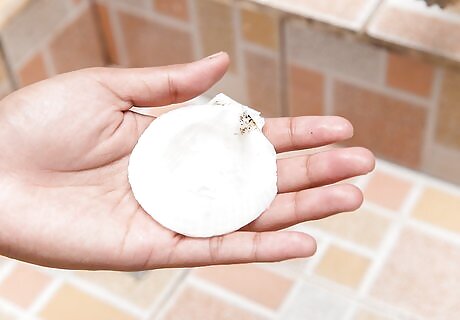
Hold the scallop with the darker side facing up. Turn the specimen so that the darkest side of the shelled scallop is facing towards you. The hinge of the shell should be pointed away from you. The darker side is the top of the shell and will not have the scallop attached to it. This will allow you to remove the darker half of the shell without discarding the scallop.
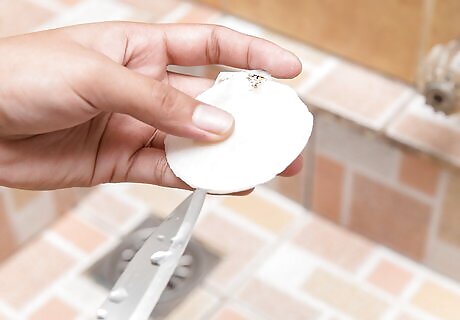
Insert a sharp object between the halves of the shell. Take a paring knife or spoon and insert it between the top and bottom halves of the shell. This will allow you to pry it open. Don’t insert the knife too deeply into the shell or you might damage the scallop. Depending on the size of the shell and scallop, you could insert the knife about an inch (about 2.5cm) into the shell without cutting the scallop.
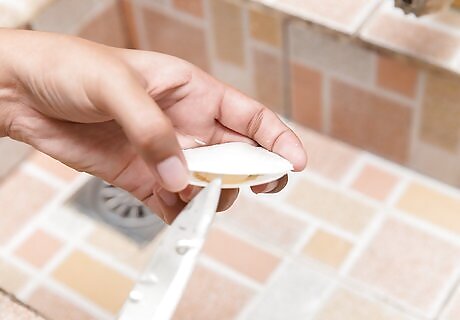
Pry the shell open. Apply pressure to the knife or spoon to slowly open the shell. Find where the scallop's muscle meets the top half of the shell and cut through it. When you cut through this muscle, you will disengage the top half of the shell from the bottom half, allowing the shell to open.
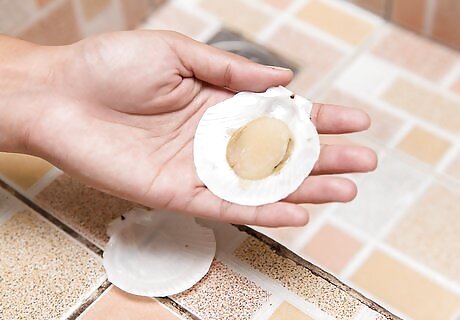
Discard the top half of the shell. Throw the top half of the shell (the darker half) away once you have cut away the attachment. You now only need the bottom half, which will be holding the scallop. To remove the top half, simply pull it upwards and break it apart from the lower half at its hinge.
Cleaning the Scallop
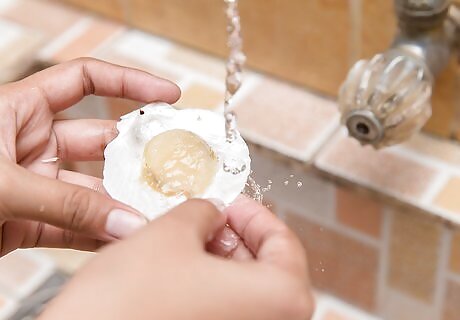
Remove the dark innards. Clean the inside of the scallop shell of everything but the muscle. Remove all of the dark parts of scallop, leaving the white muscle inside the shell. When doing this, you should scrape the innards off of the muscle using your paring knife or spoon. This can be done easily and in one swipe if you begin scraping at the hinge and follow along the muscle in one clean movement.
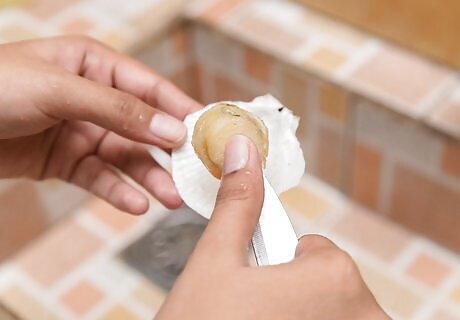
Remove the scallop from the shell. Detach the muscle from the shell once you have removed the innards from the inside of the shell. You can do this by inserting a paring knife or sharpened spoon underneath the scallop's muscle and dislodging the muscle from the shell. You should have no trouble removing the muscle. You can discard the lower half of the shell after removing the scallop.
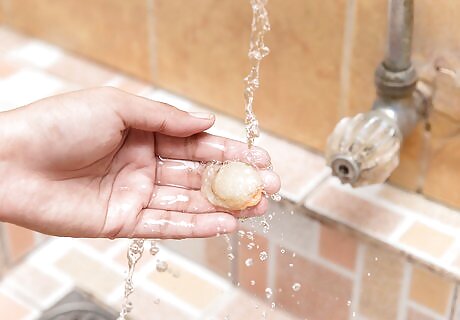
Run the scallop under cold water. Putting your scallop under water will wash away impurities and get rid of sand and other grit. Run it under cold water for at least 30 seconds.

Rub the scallop with your fingers. This will make sure that all impurities have been removed from the scallop. Do this while holding it under running water or place the scallop in a bowl of cold water to rinse off any grit. Sometimes, sand or grit will remain on the scallop but be invisible to the eye. Rubbing the scallop ensures that you are getting all the impurities that might not be visible to you.
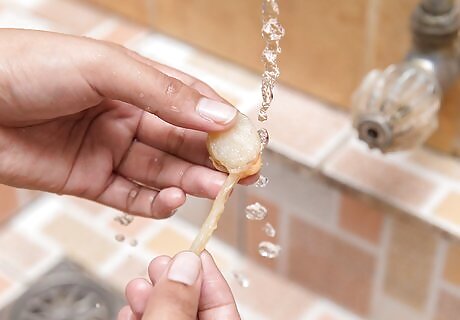
Remove any remaining side muscle. While you are washing the scallop, you might find other remaining innards or a side muscle. Remove all of these by gently pulling or cutting them off. The only thing left should be the round white muscle. Remaining side muscle can be inconspicuous. To determine if what you're touching is side muscle, examine the scallop and feel for tougher pieces of muscle on the side of the scallop. If these tough pieces also have fibers that run against the grain of the scallop's muscle, then these are side muscles and can be removed. It is important to remove side muscle because it doesn’t cook well. It will become rubbery when cooked.
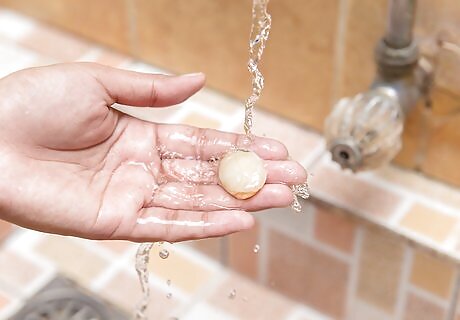
Rinse the scallop again after removing the side muscle. Give the scallop one good final rinse after removing the side muscle. This will wash away any remaining residue. Your scallop is now ready to be cooked!




















Comments
0 comment